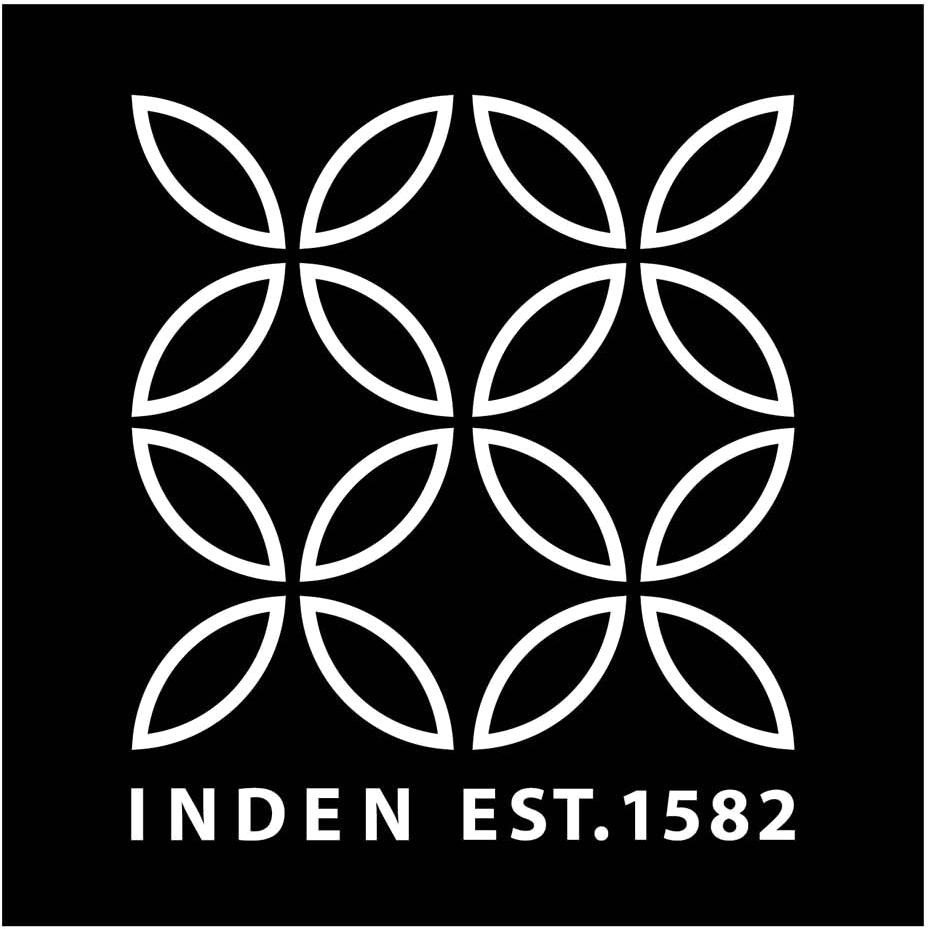“Traditions do not advance simply by being handed down and repeated. We must take on new challenges and continue to build on tradition through trial and error to continuously innovate.”
Sarasa - Layering colors to create a harmonious combination
Sarasa is a technique of dyeing multi-colored patterns on deerskin leather using stencils. The leather piece is fixed in place and laid out on a steel plate to prevent height differences and misalignment. The stencil is changed for each color to create a gorgeous pattern by layering colors. It takes a highly skilled craftsman to evenly distribute the colors, which requires a great deal of time and skill. We interviewed the INDEN Sarasa artisan, Takeshi Tozawa who adds vividness to INDEN products with a wide variety of color combinations.
What inspired him to become a Sarasa craftsman?
Mr. Tozawa has loved handcrafting since he was a child. His childhood hobby was making guitars from scratch which later turned into him handcrafting shamisen (a three-stringed Japanese musical instrument). He is a genuine craftsman who has been interested in the traditional crafts of his hometown Yamanashi Prefecture since he was a student. He became a Sarasa craftsman when he was 22 years old and it all started when he applied for a job at INDEN, which happened to be recruiting for a position.
Work and Tradition at INDEN
After joining the company, he learned all the techniques one by one: lacquering, smoking, baking, printing, and sarasa. There isn’t a step-by-step manual for the inden techniques, so he learned by watching his seniors and practicing the technique until he perfected it. After being taught the basics, he honed his efforts to master his own style of sarasa by relying on his own senses. And now he has a career of over 20 years as a sarasa artisan at Inden. To preserve the 400-year-old Inden technique, it is important to watch and learn, pass on the oral traditions from predecessors and above all, cherish and be proud of Inden brand, he says.
Colored with Japanese and Western Encounters
"Sarasa" is a patterned dye brought from India, Java, Thailand, Persia, and other countries by Japanese trade with Spain and Portugal.
The Difficulty of Sarasa Technique
When he first started his training, he had a hard time with the pattern. Sarasa is not only painted with a pattern, but also colored using Ise-katagami, a traditional paper pattern that is carved by hand by craftsmen. Sarasa craftsmen must also learn how to handle Ise-katagami, which lasts only one to two years even with careful care. If the paper pattern dries out, it shrinks and the shape of the pattern is deformed, so it must be put back in water and wiped before use. The degree of shrinkage depends on the season and humidity. Mr. Tozawa says that even after 20 years, he is still learning how to handle it.
Sarasa is made by layering colors on top of each other using different stencils. Therefore, if there is any misalignment of stencils, the colors get mixed up and cannot be sold as a product. The work requires constant and total concentration because one cannot be distracted.
The difficulty lies not only in the handling of the paper pattern and the layering of colors, but also in making the paint. With his long training, Mr. Tozawa is able to create colors that match the deerskin, the product, and the customer's request. The most difficult color is "white”. Coming from a wild animal, every strip of deer leather is different and has unique texture. The color of the paint is affected by the texture, temperature, humidity which can cause a yellowish tint. So it’s especially difficult to make pure white.
When you pick up a Rippleal, an Inden design that uses white color, know that there is a large amount of training and tradition in making that piece perfect.
Attraction of Sarasa
Mr. Tozawa says that the attraction of sarasa is the process of layering colors. The greatest charm of sarasa is the beautiful pattern woven without mixing colors. The colorful layered patterns and the process of creating a single piece of work. The patterns of Rippleal and Chevron are all made by Mr. Tozawa alone. The black and white colors create beautiful patterns and add sophistication to the products. He is revolutionizing the sarasa industry with his unprecedented use of color. Such as adding glitter to the paints to create a shimmering effect. He is constantly challenging himself to create new colors and these new challenges are what makes him so rewarding.
INDEN est.1582 Sarasa Cratsman
Mr. Tozawa is the only craftsman at INDEN who has a technique of the Sarasa.
Tradition and Changing Times
There have been changes over the past few decades in using the sarasa technique. If there is an ingredient that is not good for the environment, it needs to be removed from the paint and that process sometimes changes the color, he said. It is also his craftsmanship and deep knowledge of the process that maintains quality, even with these adjustments.
He says that the Inden’s sarasa technique of today is the result of overcoming the hardships that come with the changing of times.
Future Challenges
Mr. Tozawa would like to challenge himself to create patterns that fit the diverse world and use flashy colors that have never been seen before. He would like to create a new kind of Inden that will surprise everyone and expand the possibilities of Inden by taking the designs to the next level.
Mr. Tozawa's recommended places of Yamanashi
When you come to Yamanashi, you must not miss Mt.Fuji!
Shosenkyo Gorge is known as one of the most beautiful gorges in Japan
and also Mt. Yatsugatake is one of the most popular hiking and trekking
destinations. Hope you enjoy the beauty of nature in Yamanashi.




